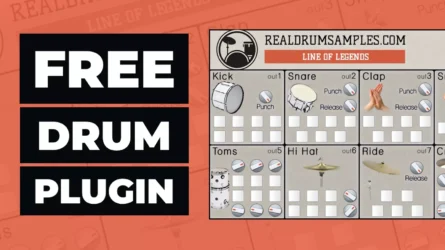This essential guide will explain what is texture in music, the different types of texture, and explain each texture in detail and why they are crucial.
What Is Texture In Music?
The texture in music is how the tempo, melody, and harmonies are combined in a composition, determining the overall quality of sound in a piece of music. It describes the complexity and amount of layers a piece of music has. For example, a thick texture can contain many layers of instruments.
- What is Texture in Music
- Examples of Texture In Music
- Types of Textures
- What is Homophonic Texture
- What is Polyphonic Texture
- What is Monophonic Texture
- What is Heterophonic Texture
- Homophonic vs. Polyphonic
What is Texture in Music?
Musical texture is basically the element of music that analyzes musical layers. It is actually the way to describe how a piece of music or sound is organized.
The musical texture of a piece can change because of the following factors:

- The number of parts playing simultaneously
- The timbre of the instruments or voices playing these parts
- The Harmony used
- The Tempo used
- The Rhythm used
Just like any physical thing has texture, so does the music. However, since music can’t be touched and so its texture is actually characterized by sound.
The thickness of a musical texture can change by the amount and the richness of the instruments playing the piece of music. And the thickness generally varies from light to thick.
Songs use a variety of textures to keep the piece of music interesting.
What Are Examples of Texture In Music?
A texture in a piece of music can be described in a lot of different ways.
1. Thick Texture
A piece of music is said to have a thick texture if there are many layers of instruments or if a lot of melodies or harmonies are being played at the same time.
2. Thin Texture
A piece of music is said to have a thin texture if there are only a few instruments being played or if one or two melodies and harmonies are being played.
3. Open Texture
A music piece can be said to have an open texture (or a wide or spacious texture) if there’s a large gap between the highest and lowest notes of the piece of music.
4. Closed Texture
A piece of music has a closed texture (or a tight texture) if all the singers or instruments are playing the notes that are close together.
What Are the Different Types of Textures?
Following are some of the different types of textures in music:
- Homophonic
- Polyphonic
- Monophonic
- Heterophonic
Let’s see one by one about each of these different types of textures in music.
What is Homophonic Texture?
In simple words, when a melody is supported by harmony, then the texture is homophonic. Breaking down the word into two parts:
- Ho mo = Same or Similar
- Phonic = Sound
So in this type of texture, you can find multiple different notes playing, but they are all based on the same melody.
In music that uses the homophonic texture, one layer grabs your attention while the other remains in the background.
So out of the multiple voices in a piece of music having the homophonic texture, the melody generally stands out prominently, and the others form a background of the harmonic accompaniment.
It is noteworthy that if all the parts have much the same rhythm, then the homophonic texture can also be described as homorhythmic.
In Western music, homophony is the most common texture. Some examples of a song that uses the homophonic texture are “Perfect” by Ed Sheeran and Chopin’s “Prelude in E Minor“.
What is Polyphonic Texture?
If a piece of music has multiple independent layers happening at the same time, then it is called polyphony. If we break down the word polyphonic into two parts, then it would be like this:
- Poly = Many
- Phonic = Sound
Polyphony occurs when there are two totally separate melodies occurring simultaneously. You can think of it as basically two or more parts doing their own thing. The polyphonic texture can also occur if you take the same melody but start it staggered intervals.
Some of the songs where polyphonic texture can be found are the “Row, Row, Row Your Boat” or “Frère Jaques”.
What is Monophonic Texture?
The monophonic is the most basic type of texture. Actually, if we break down the word Monophonic into two parts, then it will be:
- Mono = One
- Phonic = Sound
So a monophonic texture has only one layer, that is, a single melodic line with no accompaniment.
In the case of monophony, it doesn’t matter how many instruments or voices are present as long as they are all singing or playing the same thing at the same time.
It also doesn’t matter that much if the instruments or voices are on the exact same frequency or if they are singing in octaves.
Note that it also doesn’t matter if drums are there or not, as generally, drums are neither melody nor harmony. So, drums are generally not considered when determining the type of texture.
Many easy and simple songs that are learned in our childhood days are actually monophonic songs. For example ‘Happy Birthday’ or ‘Alphabet Song’.
What is Heterophonic Texture?
Heterophonic texture occurs when two or more versions of the same melody are happening at the same time. If we break down the word heterophonic, then it will be like this:
- Hetero = Different
- Phonic = Sound
Heterophony is a type of texture that is characterized by the simultaneous variation of a single melody line.
The heterophonic texture is relatively rare in Western music and is generally common in non-western music.
Homophonic vs. Polyphonic
A homophonic texture is a composition that has the melody along with the accompaniment.
At the same time, polyphonic texture refers to a piece of music that has a mix of melodies that are each separate and independent but still in harmony with the rest.
The homophonic texture is most commonly used in Western music. But the polyphonic texture can be found in the children’s canon songs or rounds.
Summary of Texture in Music
In music, texture refers to how tempo, melody, and harmony combine in a composition, determining its overall sound quality. The level of complexity and number of layers is measured by texture. The thicker the texture, the more layers there will be.
Understanding and being able to describe texture in music is an important part of music theory. It’s essentially about how many layers of melodic lines can be heard in a piece.
The simplest form is the monophonic texture, which refers to just one sound, often a single melody line. This is contrasted with music that has more than one melody, often supported by a rhythm section, creating different textures.
The melody line is the main melody we hear, often played by different instruments or sung as the vocal line. This lead melody is commonly heard in many forms of music today and has been a staple in music history.
The harmonic relationship between the melody and the rhythmic accompaniment contributes to the overall texture of the piece, often providing harmonic support to the lead melody.
Musical textures can also be made more complex through simultaneous melodic lines and block chord texture, where chords are played together like a block.
Famous examples of these different textures can be found throughout music history, including the song “Bohemian Rhapsody,” which showcases many sounds at different octaves.
It’s not just about how many layers there are, but also about other aspects that contribute to the musical texture.
This includes the musical lines, which can be melodic or harmonic, and are often played by different instruments. These elements of music are intertwined to create a specific feel or atmosphere in the piece.
In most common forms and terms, the texture in music refers to the overall sound quality. This is determined by the types of textures used, from the simplest monophonic texture with just one sound to the more complex textures created by distinct melodic lines. Many composers utilize these different techniques to create a unique sound.
Overall, the texture of music is a vital part of the listening experience. It adds depth, richness, and complexity to the music, making it more interesting and enjoyable.
Whether it’s the simple beauty of a single melodic line or the intricate interplay of many sounds, the texture plays a significant role in how we perceive and appreciate music as well. So next time you listen to a piece of music, try to identify and describe the musical texture – it will give you a whole new appreciation for the art.
I hope you now have a better understanding of texture in music and how to use it when creating music.
If we missed anything, please share it in the comments.





Very useful website. Thanks a lot. Thanks once again.